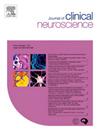二十年来美国癫痫相关死亡率趋势的差异
IF 1.8
4区 医学
Q3 CLINICAL NEUROLOGY
引用次数: 0
摘要
在美国,癫痫每年影响数百万人,导致残疾和死亡。这项研究的目的是全面深入研究癫痫相关死亡率的流行病学框架,在过去20年里,通过性别、种族和地理区域的数据分层,因为这些以前没有做过这种程度的研究,以期准确地解决目标人群。方法采用ICD-10编码G40.0 ~ G40.9,回顾性分析美国疾病控制与预防中心(CDC)数据库中1999 - 2020年各年龄组癫痫相关死亡率数据。每10万人的年龄调整死亡率(AAMRs)按年份、性别、种族/民族、死亡地点和地理位置进行计算和分类。Joinpoint回归分析这些aamr,得出年百分比变化(APCs),以评估死亡率趋势变化。结果1999年至2020年间,美国共有57,304例癫痫相关死亡。1999年癫痫的总体AAMR为0.6 (95% CI, 0.5 - 0.6),到2020年增加到1.64 (95% CI, 1.59 - 1.68)。在1999年(0.7比0.47)至2020年(1.84比1.46)的研究期间,男性的AAMR高于女性;在第二个十年,即2010年至2020年,男女APC都有显著上升。死亡率最高的是非西班牙裔(NH)黑人或非洲裔美国人(AAMR:1.38),其次是NH美洲印第安人或阿拉斯加原住民(AAMR:1.07), NH白人(AAMR:0.76),西班牙裔或拉丁美洲人(AAMR:0.76),以及NH亚洲或太平洋岛民(AAMR:0.32)。从区域分析来看,AAMR的差异最大,西部地区的AAMR为1.04,其次是中西部地区(AAMR为0.88)、南部地区(AAMR为0.77)和东北地区(AAMR为0.53)。aamr位于前90百分位的州包括爱荷华州、密西西比州、科罗拉多州、南达科他州和密歇根州,非大都市地区的aamr(0.92)高于大都市地区(0.76)。结论我们的研究结果强调了解决死亡率上升的关键重要性,特别是在第二个十年,通过制定针对高危人群的战略和政策,改善对这些患者的管理框架,提高公众对疾病及其危险因素的认识。本文章由计算机程序翻译,如有差异,请以英文原文为准。

Disparities in epilepsy-associated mortality trends in the United States of America over two decades
Introduction
Epilepsy affects millions of people in the US annually, leading to disability and death. This study aims to comprehensively delve into the epidemiological framework of epilepsy-related mortality by stratification of data through gender, ethnicity, and geographical regions over two decades, as these have not been done previously to this extent, with a view to addressing the target population precisely.
Methods
This retrospective study analyzed epilepsy-related mortality data in the United States from the CDC (Centers for Disease Control and Prevention) database of all age groups using ICD-10 codes of G40.0 to G40.9 from 1999 to 2020. Age-adjusted Mortality rates (AAMRs) per 100,000 persons were calculated and categorized by year, sex, race/ethnicity, place of death, and geographic location. The Joinpoint regression analyzed these AAMRs to produce annual percent changes (APCs) to assess mortality trend changes.
Results
A total of 57,304 Epilepsy related deaths occurred between 1999 and 2020 in the United States. The overall AAMR for epilepsy in 1999 was 0.6 (95 % CI, 0.5 to 0.6) and increased to 1.64 (95 % CI, 1.59 to 1.68) in 2020. Men exhibited a higher AAMR than females throughout the study period from 1999 (0.7 vs. 0.47) to 202O (1.84 vs. 1.46); a significant rise was seen in APC for both genders in the second decade, i.e., 2010 to 2020. The highest mortality was noted in Non-Hispanic (NH) black or African Americans (AAMR:1.38), followed by NH American Indian or Alaskan Natives (AAMR:1.07), NH White (AAMR:0.76), Hispanics or Latinos (AAMR:0.76), and NH Asian or Pacific Islanders (AAMR:0.32). Regional analysis showed disparities in AAMR, the West being most prominent with an AAMR reported to be 1.04, followed by the Midwest regions (AAMR: 0.88), the South regions (AAMR: 0.77), and the Northeast regions (AAMR: 0.53). The states with AAMRs in the top 90th percentile included Iowa, Mississippi, Colorado, South Dakota, and Michigan, with non-metropolitan regions having higher AAMRs (0.92) than metropolitan counterparts (0.76).
Conclusion
The findings of our study emphasize the critical importance of addressing the rise in mortality, especially in the second decade, by devising strategies and policies targeting at-risk populations and improving the management framework for such patients, with more widespread public awareness regarding the disease and its risk factors.
求助全文
通过发布文献求助,成功后即可免费获取论文全文。
去求助
来源期刊

Journal of Clinical Neuroscience
医学-临床神经学
CiteScore
4.50
自引率
0.00%
发文量
402
审稿时长
40 days
期刊介绍:
This International journal, Journal of Clinical Neuroscience, publishes articles on clinical neurosurgery and neurology and the related neurosciences such as neuro-pathology, neuro-radiology, neuro-ophthalmology and neuro-physiology.
The journal has a broad International perspective, and emphasises the advances occurring in Asia, the Pacific Rim region, Europe and North America. The Journal acts as a focus for publication of major clinical and laboratory research, as well as publishing solicited manuscripts on specific subjects from experts, case reports and other information of interest to clinicians working in the clinical neurosciences.
 求助内容:
求助内容: 应助结果提醒方式:
应助结果提醒方式:


